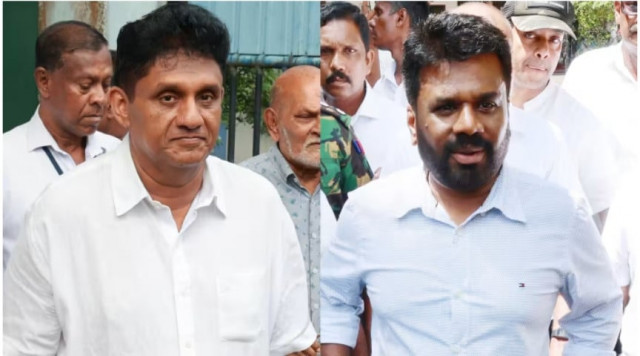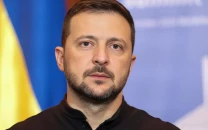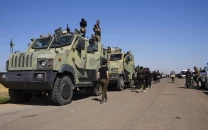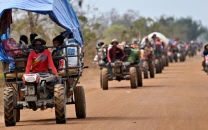Sri Lanka Elections: Second round of vote-counting between Dissanayake and Premadasa underway
This is the first in Sri Lanka’s history that a presidential election goes into a second round of vote counting.

A second round of vote-counting is underway between Marxist-leaning Anura Kumara Dissanayake and opposition leader Sajith Premadasa to determine the next president of Sri Lanka, after no candidate secured the required 50% of the vote in the first count.
Sri Lanka's electoral system allows voters to rank up to three candidates on their ballots in order of preference.
In the absence of an outright majority, the second-preference votes of eliminated candidates are added to the tallies of the two leading contenders.
Dissanayake received 39.5% of the first-round votes, with Premadasa following at 34%, according to tallies released by the Election Commission.
Incumbent President Ranil Wickremesinghe, who finished third with 17%, was eliminated along with 35 other candidates.
The second round of vote counting is expected to determine whether Dissanayake or Premadasa will secure the presidency.
The economy has been the central issue of the election, as many Sri Lankans struggle under severe austerity measures following a $2.9 billion International Monetary Fund (IMF) emergency loan.
Voters have expressed frustration with the current political establishment, which has paved the way for Dissanayake’s National People's Power (NPP) alliance to emerge as a significant force.
Dissanayake’s rise is considered a remarkable achievement for his NPP alliance, which received just 3% of the vote in the last election and has historically had limited representation in parliament.
Analysts attribute his success to his direct engagement with voters, portraying himself as a fresh alternative to the entrenched political class and vowing to end corruption.
This election marks the first time in Sri Lanka’s history that second-preference votes are being counted to determine the outcome of the presidential race.
Dissanayake’s party, the Janatha Vimukthi Peramuna (JVP), once led two failed insurrections against elected governments in 1971 and 1988, which resulted in thousands of deaths.
However, since assuming leadership of the JVP in 2014, Dissanayake has distanced the party from its violent past, committing to a path of electoral democracy and forming the NPP coalition to broaden its appeal.
How do elections in Sri Lanka work?
Elections in Sri Lanka are overseen by the Election Commission of Sri Lanka (ECSL), an independent body. Approximately 17 million citizens, out of a population of 22 million, are eligible to vote.
Sri Lankan nationals aged 18 and above, registered with the election commission, are allowed to participate.
Public servants, including police and military personnel, who cannot vote in person on election day, use postal ballots in advance, with the latest advance voting held on September 11 and 12.
Sri Lanka uses a preferential voting system, where voters rank up to three candidates on the ballot in order of preference.
To win the presidency in the first round, a candidate must secure at least 50% of the vote. If no candidate reaches this threshold, a second round of counting takes place between the top two candidates from the first round.
The eliminated candidates' votes are reassigned based on the second or third preferences indicated by voters, and the candidate with the most votes after this process is declared the winner.
Sri Lanka’s system avoids a direct run-off vote. Instead, second-preference votes are added to the tallies of the remaining candidates. If a third preference is marked for one of the top two, that vote counts toward their total.
The president of Sri Lanka serves a five-year term, with a two-term limit, as stipulated by the 19th Amendment to the Constitution, passed in 2015.



















COMMENTS
Comments are moderated and generally will be posted if they are on-topic and not abusive.
For more information, please see our Comments FAQ